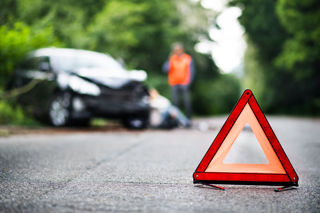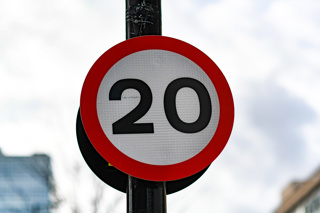Highways England is urging motorists to be more aware of Gritters this winter after 36 were involved in collisions last year.
Despite being 2.5 metres wide with flashing beacons and painted bright orange, 36 Highways England Gritters were driven into last year.
The Gritters weigh up to 26 tonnes and when they’re spreading salt travel at 40mph.
They often travel in the middle lane of a motorway to ensure the right amount of salt is spread to all lanes.
Highways England’s national winter and severe weather team leader, Paul Furlong, said: “Although the vast majority of people support our Gritter drivers by leaving a sensible distance and only passing when it’s safe to do so, we do have occasions when people misjudge the situation and end up colliding with one of our vehicles.
“We have also noticed a growing problem with drivers using the hard shoulder to undertake Gritters, risking a collision with stationary vehicles on the hardshoulder and causing a hazard to gritter drivers who need to exit at motorway junctions.
“During severe weather it’s really important that we keep traffic moving and our Gritters are out on the network enabling us to do that.”
The back of a Gritter is the most vulnerable area as it’s where the salt spreading equipment is located. If it’s struck it can mean the Gritter has to be taken off the road to be repaired, which is costly and could affect critical services in extreme weather conditions.
“We are doing what we can to improve the visibility of our fleet and we are rolling out a number of new vehicles, starting last month in East Anglia, which include a large rear chevron panel which will improve the visibility,” said Furlong.
During severe weather drivers are urged to follow this advice:
- In snow and ice, drivers should stick to the main roads where they can and only travel if necessary - drivers are also encouraged to make sure they have a winter kit in their vehicle, including an ice scraper and de-icer, warm clothes and blankets and sunglasses to cope with the low winter sun.
- In high winds, there’s a particular risk to lorries, caravans and motorbikes, so drivers should slow down and avoid using exposed sections of road if possible.
- In heavy rain, drivers should keep well back from the vehicle in front, gradually ease off the accelerator if the steering becomes unresponsive, and slow down if the rain and spray from vehicles makes it difficult to see and be seen.
- In fog, drivers should switch on their fog lights and not use lights on full beam as the fog will reflect the light back. If you really cannot see, you should consider stopping until it is safe to continue.



















Login to comment
Comments
No comments have been made yet.